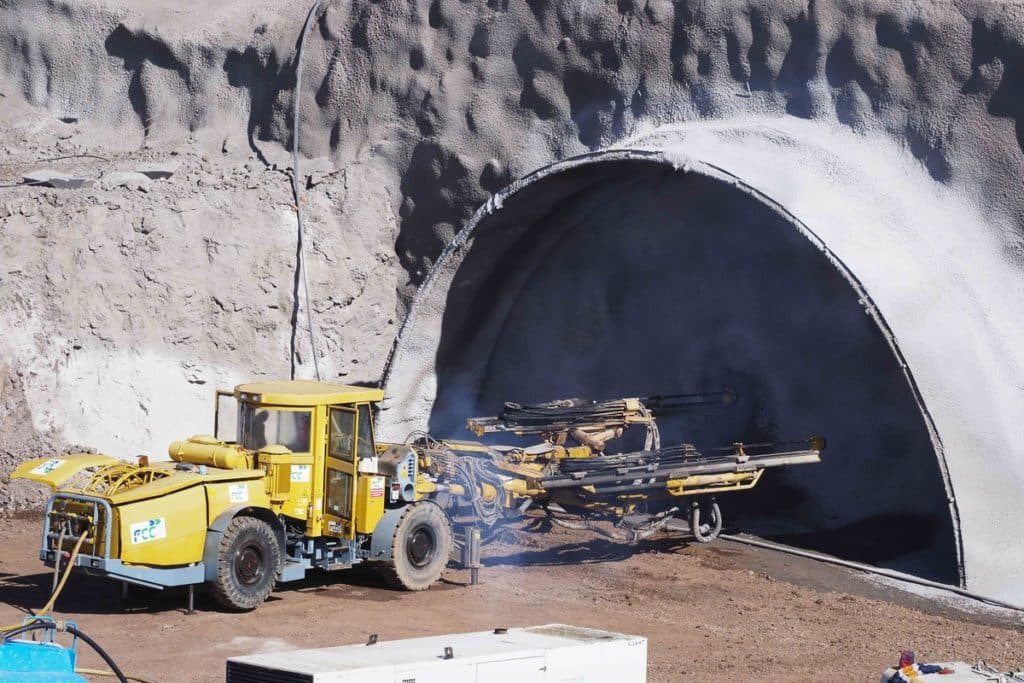robotic excavators they have already drilled three kilometers of the Teno massifnorthwest of Tenerife, of the 5.1 planned to build the largest tunnel in the Canary Islands and one of the longest in Spain and Europe, a central element of the Insular Ring, which is a challenge for modern engineering.
The robots advance faster in the two parallel mouths opened in the municipality of Santiago del Teide (southern section), where they have drilled 2,000 meters, than in El Tanque (north section), a point where they have excavated a kilometer (in each one of the two tubes) due to the difficulties presented by the terrain. In fact, the drilling machines penetrate up to 50 meters each week on the South side and 25 on the North, since in this area the rock is less consistent and requires the placement of steel fasteners to support the ground, which delays operations. . “60% of the tunnel has already been drilled, including the service galleries”, the General Director of Road Infrastructure of the Government of the Canary Islands, José Luis Delgado, told DIARIO DE AVISOS, after confirming that the work is progressing at the planned pace, “although we would all like them to be faster”, he added.
If the forecasts are fulfilled, the four mouths (two in both directions) will be in the “proximities” of the summer of 2023.
“There are sections in which we can work with explosives, through monitored robots in the four mouths that drill, in some cases, and in others they place discharges to carry out controlled blasting, in such a way that the explosion is delayed throughout the perimeter of the warehouse that is drilled, with which very precise yields are obtained”, explained Delgado, as an example of the complexity of the work that the operators face.
The underground work that is being carried out between Santiago del Teide and El Tanque, financed by the Canary Islands-State Road Agreement (2018-2027), was awarded for a value of 240,370,796 euros to the Temporary Union of Companies formed by Fomento Construcciones y Contratas (FCC), El Silbo and Syocsa-Inarsa, and officially began on November 25, 2019. Its execution period is 48 months.
The Government Council of the Canary Islands authorized on September 29 an expense of 3,762,771 euros for the revision of prices of the works carried out between November 2021 and April 2022 to adapt payments to the current prices of construction materials. Such review was endorsed by three different reports: a technical one of the supervision of the work, the agreement of the contractor and the favorable report of the General Intervention of the Government.

The Ministry of Public Works points out that the construction of the Erjos tunnel, which became the work in progress with the largest budget in Spain, is essential to improve mobility and connectivity between the north and south of Tenerife through a more safe, dual carriageway, faster and with greater capacity than the current TF-82, a mountain road with many curves. Once it comes into service, motorists will cover the distance between the two municipalities in less than 10 minutes, that is, almost three times less time than is currently used.
The general director of Road Infrastructure highlighted one of the peculiarities of the work that will connect the north and south of the island: all the rock extracted from the drilling is reconverted, after crushing, into concrete and placed inside the tunnel formwork as a vault, “with which recycling at the moment is 100%”, he pointed out.
In addition to the tunnel to solve the great orographic stumbling block of the Insular Ring, another key work of the road macro-project to put an end to the kilometric queues of the North motorway will be the section between San Juan de la Rambla and Icod de los Vinos, whose project is awaiting the report of the Environmental Assessment Commission.
The Ministry trusts that said report will be issued shortly in order to approve the construction project and take out the tender at the end of the year, if there are no problems. The Government of the Canary Islands calculates that, when this section of the Insular Ring is closed, up to 30,000 vehicles heading from the north of the Island to the metropolitan area will opt for the southern route every day, which will considerably alleviate the traffic load of the TF motorway -5.
On the other hand, José Luis Delgado indicated that the third lane between La Orotava and Guamasa will be made public within a month, after being sent this week for supervision, while the section of the La Laguna bypass project (from Guamasa to the TF-13) has already been in the hands of the Environment for two and a half months, awaiting the mandatory report, with which, “the entire procedure of the route to travel between Santa Cruz and Santiago del Teide is advanced”, stressed the General Director of Road Infrastructure of the Government of the Canary Islands.
















